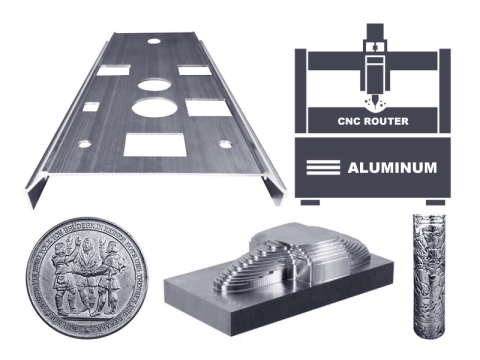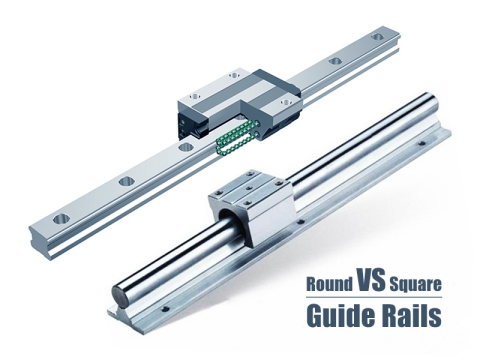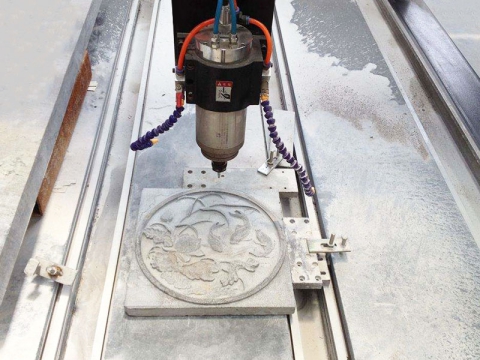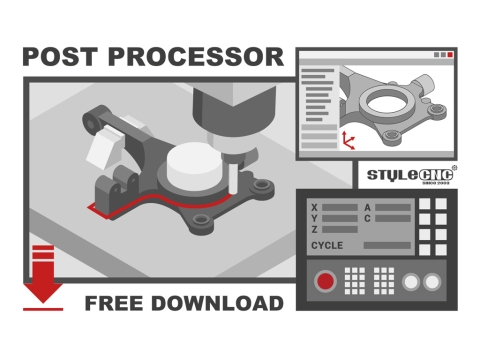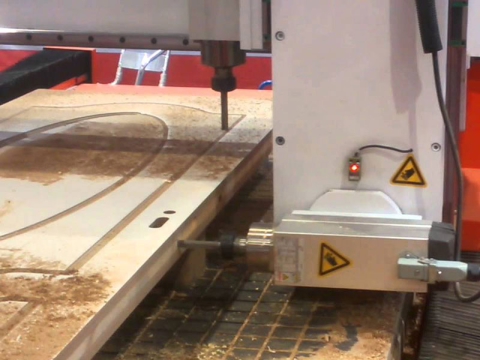CNC router is a smart manufacturing tool where a 2D/3D carving is crafted step by step with a computer numerical controller, following a tool path created by CAD software. No longer confined to basic prototyping, modern CNC routers can produce complex geometries with a range of motion capabilities from 3 to 5 axes, covering everything from woodworking to metal fabrication.
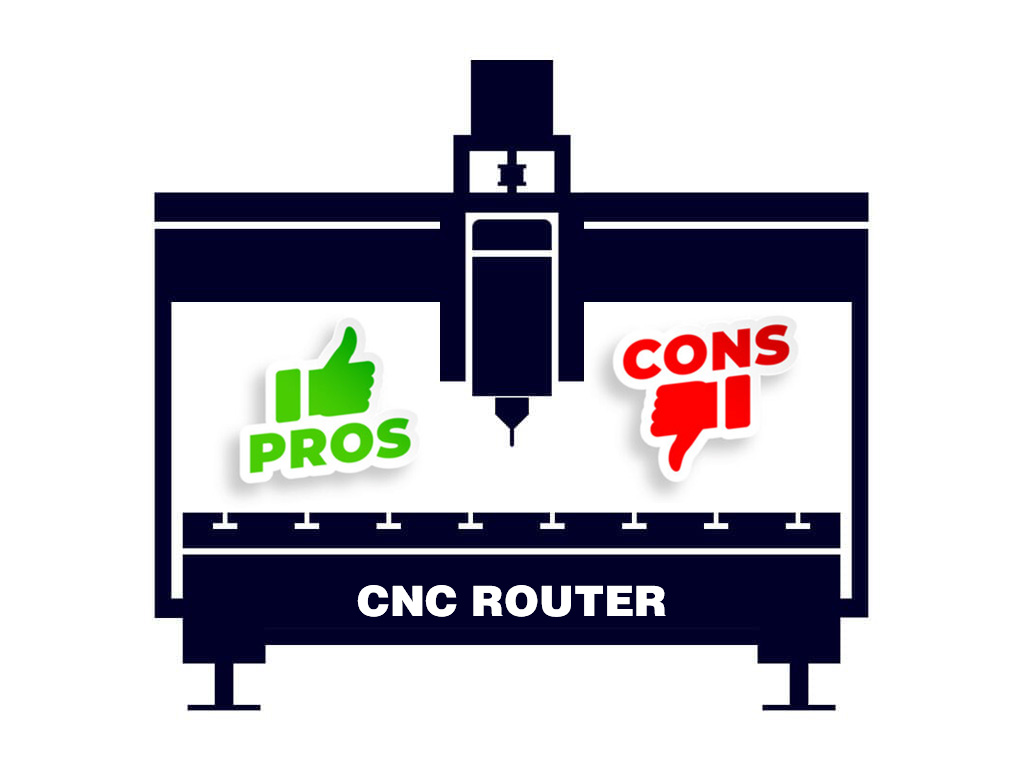
What are the Primary Advantages of CNC Routers?
You can get a wide variety of benefits from CNC routers due to its inherent advantages. Here's a breakdown of the key pros of CNC routers:
✅ High Precision and Accuracy
CNC routers are well built with extremely high mechanical and positioning accuracy, as well as a machining accuracy of up to 0.01 mm, which can automatically mill and cut CAD designs into high-quality finished products without manual operation errors.
✅ High Repeatability
Once a program is available, a CNC router machine can create identical parts repeatedly in batches, which is critical for large-scale production with quality standards.
✅ Increased Productivity and Speed
Compared to handheld routers, CNC routers can run faster, more continuously, and even automatically around the clock. Automatic tool changers can reduce downtime between operations, allowing complex multi-process tasks with one setup.
✅ Complex Geometries and Intricate Details
Able to cut complicated 2D, 2.5D, and true 3D shapes that cannot be made manually or would take an inordinate amount of time to create manually (for example, complex carvings, elaborate contours, 3D reliefs). Any fine detail work is accomplished easily.
✅ Reduced Labor Costs and Operator Fatigue
Due to the complexity of manual work, the skill requirements for operators are lower than those of master craftsmen (although programming still requires skilled labor). A foreman operator can usually easily manage multiple machines without the physical labor that comes with manual routing.
✅ Versatility
CNC routers can perform a variety of operations, such as cutting, carving, milling, drilling, slotting, chamfering, and more. They can also handle a variety of materials, from wood to metal, from foam to plastic, and even stone and ceramic (with the right bits).
✅ Enhanced Safety
The operator has minimal contact with the tool throughout the process. The spindle and moving parts are usually enclosed. This reduces the risks associated with manual operation.
✅ Material Optimization and Reduced Waste
Automatic nesting software can optimize the arrangement of parts on the raw material board, thereby minimizing scrap and increasing utilization. Compared with manual errors, more precise cutting means less material is removed unnecessarily.
✅ Rapid Prototyping and Design Iteration
Easily and quickly change a CAD design into a physical prototype for testing and evaluation. It is simple to change the CAD file and then cut a revised part, making the design process faster and more efficient.
✅ Scalability
Scalable manufacturing from single prototype to small lots to production in high volume by simply resubmitting the program.
✅ Consistent Quality
Every part produced from the same program has the same precise specifications, which translates to uniformity for the whole production run.
✅ Integration with Design Workflow
Smooth integration with standard CAD (Computer-Aided Design) and CAM (Computer-Aided Manufacturing) software delivers a seamless digital process from design to finished part.
What are the primary disadvantages of CNC routers?
Although you benefit a lot from CNC routers, you must be aware of its disadvantages. The following objectively describes its key cons:
❌ High Initial Investment
Most entry-level small routers cost at least $2,000, with professional and industrial CNC machines costing more, ranging from $8,000 to over $100,000. Add to that the cost of software (CAD/CAM), tooling (drills), dust collection systems, workholding (fixtures, vacuum pumps), and even facility upgrades (power, space).
❌ Steep Learning Curve and High Skill Requirements
Programming (CAM): Developing error-free, optimized tool paths is not easy and requires sufficient CAD/CAM skills and experience, which is different from operating a CNC router. Operation and setup: Setting up the CNC machine (such as tool selection and cutting parameter settings), defining work offsets (especially in the Z axis), and knowing how to troubleshoot all require training, skills, and time considerations. Maintenance: Understanding basic mechanical and electrical maintenance is critical to maximizing uptime.
❌ Long Setup and Programming Times
Not Always Instantaneous: For one-off or low-volume production, you may find that the time required to design (CAD)-program (CAM)-tool/material setup and, in some cases, validate the program can take longer than it takes to get the part to the saw, mill or lathe for manufacturing. Complexity = Time: Complex toolpaths, both in CAD design and part geometry, can require additional programming and machining time.
❌ High Ongoing Operational Costs
Tooling: Tools (end mills, routers) wear and break. These tools cost money, which can be high when machining harder materials (metals and composites). Maintenance: Lubrication, calibration, belt and/or rail replacement, spindle care and repair are all operating expenses. Power consumption: Large industrial milling cutters consume a lot of power due to the high torque and speed when cutting heavily. Software updates/subscriptions: CAD/CAM software often requires ongoing paid updates/subscriptions.
❌ Material Waste During Learning and Setup
Trial and error: Material is often wasted due to programming, setup or tooling decision errors, resulting in damaged material, which is called "scrap". Fixture waste: Material is only used for workholding (such as tabs and scrap plates for vacuuming).
❌ Limited Suitability for Certain Materials
Hard metals: When machining aluminum/brass, machining is possible, but CNC router machines are generally not suitable for efficient machining of hardened steel or heavy steel structures, so CNC milling/plasma cutting is more feasible. Hazardous materials: Processing other materials, such as carbon fiber, requires specialized or (expensive) dust collection equipment, as well as personal protective equipment for handling hazardous dusts.
❌ Safety Concerns
High-Speed Cutting: The flying debris hazard (chips, broken tools) is significant requiring full enclosure and PPE (safety glasses, hearing protection). Dust Inhalation: High levels of fine dust (wood, plastic, composites, metals) are produced which requires an effective dust collection system. Moving Parts/Pinch Points: The automatic tool changers and the moving items of the axes during the maintenance and setup phases create entanglement/pinch issues. Noise: Routers make extremely high levels of noise.
❌ Space Assignments
Machine Footprint: Industrial routers have a large footprint which requires clearance for operation and safe handling of the construction material and maintenance. Ancillary Equipment: The machine will require ancillary space for a dust collector, air compressor (required for vacuum pumps/ATC), and for material handling and storage.
❌ Fixture Issues
Safely and reliably holding thin, flexible, irregularly shaped, or small workpieces without deforming them can be difficult and time-consuming. Vacuum tables, while useful, have some limitations.
❌ Not Always Faster for Simple Cuts
For a simple cut or hole in a piece of wood, an experienced worker can use a handheld milling machine or drill press faster than writing an operating program and setting it up on a CNC machine.
❌ Maintenance Downtime
As noted in the discussion of downtime, failures occur in any electromechanical system. Whenever a failure or preventive maintenance causes downtime, production schedules are impacted.
❌ Risk of Catastrophic Failure
Programming errors (wrong Z-depth), tool damage, and fixture failure can all lead to catastrophic damage to a machine tool spindle, bed, or fixture, which can be extremely costly.
Considerations
CNC routers have had a disruptive impact on manufacturing processes. They offer unmatched repeatability, speed, accuracy, and consistency for geometries of virtually any complexity. They can significantly increase productivity, reduce labor and waste, enhance safety, and increase flexibility across materials and applications. Cost and skill requirements are important, but they also offer certain economic benefits that make them invaluable in manufacturing, prototyping, and custom manufacturing in today's market.
CNC router machines are powerful manufacturing tools but they are not the "magic bullet". Their primary disadvantages relate to high costs (initial purchase, operational, maintenance), the need for a considerable amount of knowledge/expertise (programming, operating, maintaining), time expenditures (set-up/programming) and safety/environmental issues (dust, noise, airborne debris). They are generally limited to specific materials, limited in the complexity of your fixturing/holding techniques.
Carefully weigh the pros and cons and weigh them against your unique needs (volume, part complexity, materials, budget, existing expertise) before making an investment. CNC routers are great for complex, repetitive work, but they may be an overkill/unfeasible solution for simple, one-off jobs.
